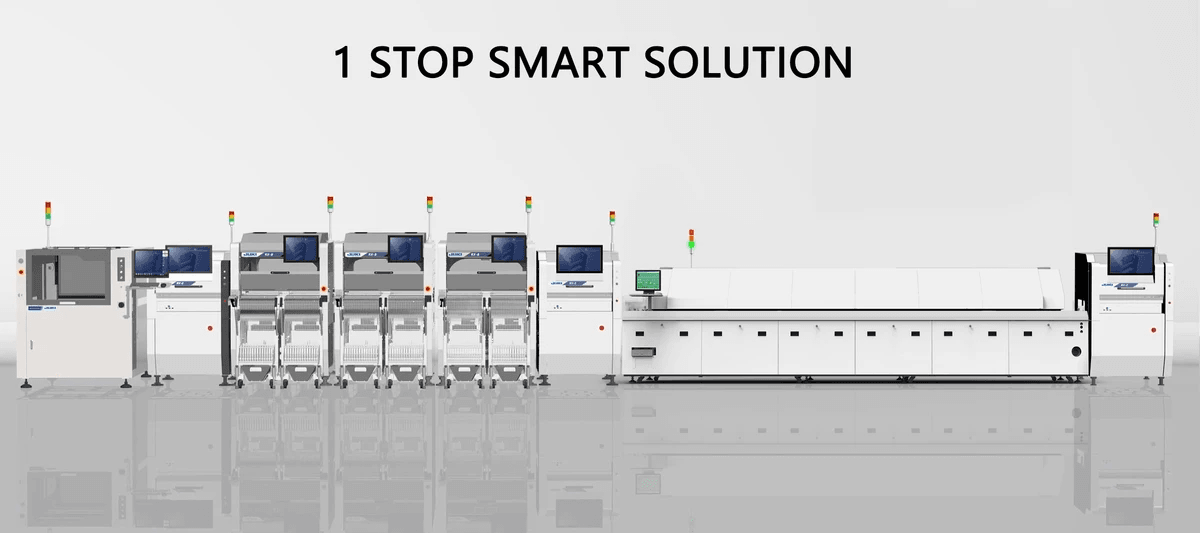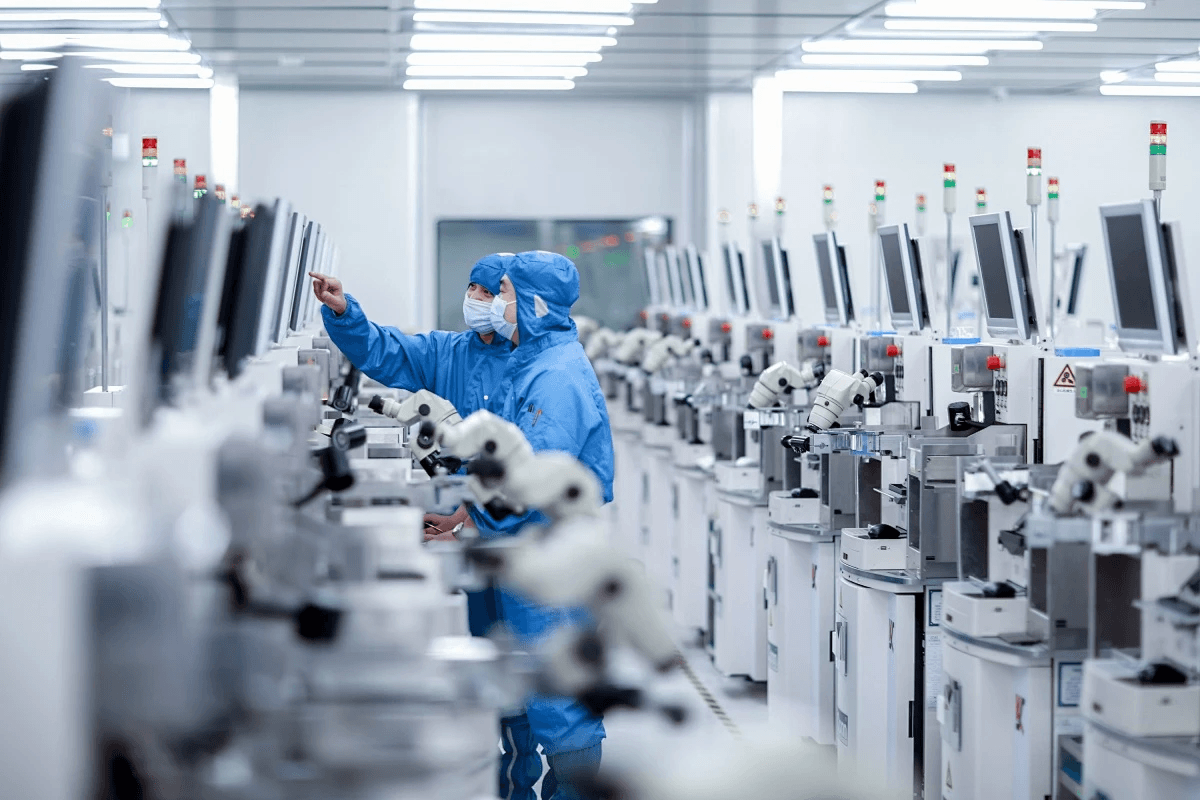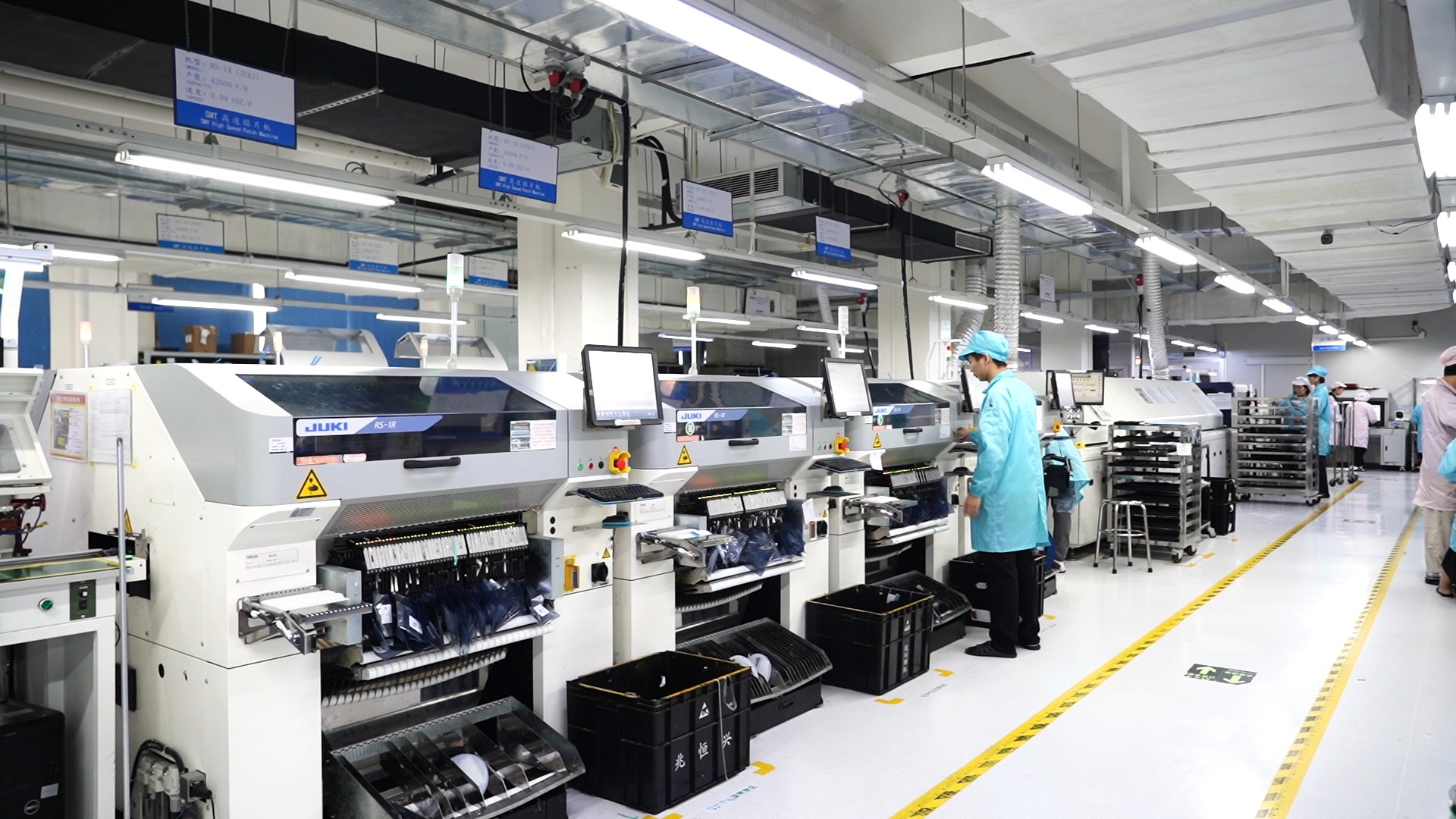Introduction

In the fast-paced world of manufacturing, the automated insertion machine has emerged as a game-changer, streamlining processes and enhancing productivity. These machines are designed to automate the insertion of components into various products, significantly reducing manual labor and increasing efficiency. As we delve into the intricacies of what an insertion machine is, its key features, and the myriad benefits it offers, it becomes clear why investing in such technology is crucial for modern production lines.
Understanding Automated Insertion Machines
An automated insertion machine is a sophisticated device that mechanizes the process of placing components into assemblies or circuit boards with precision and speed. This technology eliminates much of the tedious manual work traditionally associated with component placement, allowing manufacturers to focus on more complex tasks. To truly appreciate these machines, one must explore both their operational mechanics and their transformative impact on various industries.
Key Features of Insertion Machines
Insertion machines come equipped with several key features that enhance their functionality and usability. For instance, many models incorporate advanced vision systems for accurate component placement, ensuring high levels of precision during operation. Furthermore, features like adjustable speeds and multi-component handling capabilities allow these machines to adapt to different production requirements seamlessly.
Benefits of Automated Insertion
The benefits of using automated insertion machines are manifold; foremost among them is increased efficiency in production processes. By automating repetitive tasks such as component placement, manufacturers can not only save time but also reduce errors associated with manual handling. Additionally, utilizing these machines leads to improved product quality and consistency—essential factors in maintaining competitiveness in today’s market.
What is an Insertion Machine?

When diving into the world of manufacturing and assembly, one might wonder: what is an insertion machine? An insertion machine is a piece of equipment designed to automate the process of placing components into a substrate, such as printed circuit boards (PCBs). This technology has revolutionized production lines by enhancing efficiency and precision, making it indispensable in various industries.
Definition and Overview
At its core, an automated insertion machine streamlines the assembly process by mechanically inserting components with speed and accuracy. These machines can handle a variety of parts, from tiny resistors to larger connectors, ensuring that each component is positioned correctly every time. By utilizing sophisticated algorithms and robotics, they minimize human error while maximizing throughput—truly a game-changer in manufacturing.
Common Uses in Industries
Insertion machines are widely used across multiple sectors including electronics, automotive, aerospace, and consumer goods. In electronics manufacturing, for instance, they are essential for populating PCBs with components like capacitors and ICs—a crucial step in creating reliable electronic devices. The automotive industry also benefits from these machines by ensuring that various sensors and connectors are inserted accurately into vehicles during assembly.
Advantages of Using Insertion Machines
The advantages of using automated insertion machines are numerous and significant. Firstly, they drastically reduce labor costs since fewer operators are needed on the production line; this translates to lower operational expenses overall. Secondly, these machines enhance product quality; their precision reduces defects caused by manual handling—after all, who doesn’t want fewer mistakes? Lastly, the speed at which these machines operate means faster turnaround times for products—an essential factor in today’s fast-paced market where time-to-market can make or break a company’s success.
What are Examples of Automated Machines?

When it comes to the world of manufacturing and assembly, automated insertion machines are the unsung heroes that keep everything running smoothly. These machines have revolutionized various industries by streamlining processes and ensuring precision in component placement. But what exactly is an insertion machine? Let’s dive into some examples and see how these technological marvels are making waves.
Different Types of Automated Insertion Machines
Automated insertion machines come in several flavors, each tailored for specific tasks within the manufacturing process. From high-speed insertion machines designed for rapid production lines to more specialized models that handle delicate components, there’s a machine for every need. Additionally, some machines focus on surface mount technology (SMT) while others cater to through-hole components, showcasing the versatility of what automated machines can do.
Another fascinating category includes multi-functional insertion machines capable of performing various operations such as soldering and testing alongside component placement. This integration not only saves time but also enhances overall efficiency in production environments. So whether you’re looking for a simple automated insertion machine or a high-speed model with all the bells and whistles, the options are plentiful.
Leading Brands and Technologies
In the realm of automated insertion machines, several brands stand out for their innovative technologies and reliable performance. Companies like Panasonic, Yamaha Motor Corporation, and Juki have made significant strides in developing state-of-the-art machinery that meets industry demands. Their commitment to quality ensures that users can trust these brands for their automated needs.
Moreover, advancements in robotics and AI have led to smarter automated systems that adapt to different production requirements seamlessly. For instance, some modern high-speed insertion machines now include vision systems that ensure precise placement by checking component alignment before finalizing the process. Such technologies not only enhance accuracy but also reduce waste—an essential factor in today's eco-conscious manufacturing landscape.
Real-world Applications
The real-world applications of automated insertion machines are as diverse as they are impressive! From consumer electronics assembly lines where speed is critical to medical device manufacturing requiring utmost precision, these machines play pivotal roles across sectors. In automotive industries, they help streamline complex wiring harness assemblies—proving invaluable when every second counts on the production floor.
Furthermore, industries focused on renewable energy solutions utilize these advanced systems to assemble solar panels efficiently or produce wind turbine components with reliability at scale. The versatility of what is an insertion machine cannot be overstated; it truly embodies innovation across different fields!
What is the Auto Insert Process?

The auto insert process is a sophisticated method employed by automated insertion machines to enhance efficiency and accuracy in component assembly. This process streamlines the insertion of various components into printed circuit boards (PCBs) or other assemblies, significantly reducing manual labor and minimizing errors. With the increasing demand for precision and speed in manufacturing, understanding this process becomes crucial for industries relying on high-speed insertion machines.
Step-by-Step Guide to Auto Insertion
The auto insert process begins with the automated insertion machine identifying the components required for assembly through advanced programming and vision systems. Once identified, these components are picked up using specialized grippers or suction cups, ensuring a secure hold without damaging sensitive parts. The next step involves precisely positioning each component onto its designated spot on the PCB or assembly, followed by securing it in place through methods such as soldering or press-fitting.
After all components are inserted, the machine often conducts a final verification step to ensure that each piece has been placed correctly before moving on to quality control checks. This systematic approach not only enhances productivity but also guarantees that what is an insertion machine can deliver consistent results across multiple production runs. By automating this intricate process, manufacturers can focus on innovation while leaving repetitive tasks to their reliable automated systems.
Key Components Involved
Several key components work together seamlessly within an automated insertion machine to facilitate the auto insert process efficiently. First and foremost is the feeder system, which holds and supplies components in an organized manner for quick access during operation. Next are the handling mechanisms—such as robotic arms or conveyor belts—that transport components to their designated locations with impressive precision.
Additionally, sensors play a vital role in monitoring each stage of insertion; they detect any misalignments or errors that may occur during assembly. These technologies collectively ensure that high-speed insertion machines operate at optimal levels while maintaining quality standards throughout production runs. Understanding these key elements helps businesses appreciate how advanced technology can transform traditional manufacturing processes into streamlined operations.
Quality Control Measures
Quality control measures are paramount in ensuring that every component inserted by an automated insertion machine meets stringent industry standards. One of the primary methods employed is real-time monitoring during the auto insert process; sensors continuously check for proper placement and alignment of each component as it’s being inserted. If any discrepancies are detected, immediate corrective actions can be taken to prevent defective products from advancing further along the production line.
Another essential aspect of quality control involves post-insertion testing where completed assemblies undergo thorough inspections using techniques such as X-ray imaging or electrical testing to verify functionality and integrity. With advancements like these integrated into what is an automatic component insertion technique, manufacturers can confidently assure clients of product reliability while minimizing waste due to defects or rework needs.
In conclusion, mastering what is the auto insert process ensures that companies leveraging high-speed insertion machines remain competitive in today’s fast-paced market environment while delivering top-notch products consistently.
What is the Automatic Component Insertion Technique?

The automatic component insertion technique revolutionizes how components are placed into electronic assemblies, streamlining the manufacturing process. This method utilizes advanced automated insertion machines to ensure precision and efficiency, ultimately enhancing production quality. With the rise of high-speed insertion machines, manufacturers can expect faster turnaround times without sacrificing accuracy.
Overview of Automatic Techniques
Automatic techniques for component insertion involve using specialized machinery designed to handle various components with minimal human intervention. These automated insertion machines can quickly and accurately place components onto printed circuit boards (PCBs) or other substrates, significantly reducing labor costs and errors associated with manual processes. The auto insert process typically includes feeding, positioning, and inserting components in a seamless workflow that maximizes productivity.
Comparison with Manual Insertion
When comparing automatic component insertion to manual insertion, the differences become starkly apparent. Manual insertion relies heavily on human skill and attention to detail, which can lead to inconsistencies and slower production rates. In contrast, automated machines provide uniformity in placement and speed that manual methods simply cannot match; this is especially crucial in high-speed environments where efficiency is paramount.
Innovations in Insertion Techniques
Innovations in automatic component insertion techniques continue to emerge as technology advances at a rapid pace. Newer models of automated insertion machines incorporate features like vision systems for enhanced accuracy and adaptive algorithms that optimize the auto insert process based on real-time data. These advancements not only improve overall efficiency but also pave the way for more complex assemblies that were previously challenging to achieve with traditional methods.
High Speed Insertion Machines

In the fast-paced world of manufacturing, speed is not just a luxury; it’s a necessity. High-speed insertion machines play a pivotal role in enhancing production rates, allowing companies to meet increasing demands while maintaining quality. When considering what is an insertion machine, one must recognize that its efficiency can significantly impact overall productivity.
Importance of Speed in Production
Speed in production translates directly to profitability and competitiveness in today’s market. The faster an automated insertion machine operates, the more components it can handle within a given timeframe, which is crucial for high-volume industries. Companies are constantly seeking ways to optimize their processes, and high-speed machines provide a clear advantage by reducing bottlenecks and ensuring timely delivery.
Features of High-Speed Machines
High-speed insertion machines come equipped with various features designed to maximize efficiency and minimize downtime. These machines often include advanced feeding systems that ensure components are delivered quickly and accurately during the auto insert process. Additionally, many models boast automation capabilities that allow for quick changeovers between different product lines, making them versatile tools for manufacturers looking to adapt swiftly to market changes.
Impact on Manufacturing Efficiency
The impact of high-speed insertion machines on manufacturing efficiency cannot be overstated. By significantly reducing cycle times, these machines enable manufacturers to increase output without compromising on quality or precision—an essential factor when discussing what are examples of automated machines in action. Furthermore, as companies invest in innovations related to the automatic component insertion technique, they find themselves better positioned to compete globally while also enjoying reduced labor costs associated with manual processes.
Conclusion
Automated insertion machines have become a cornerstone of modern manufacturing, revolutionizing how components are assembled across various industries. Their ability to enhance efficiency, reduce human error, and increase production speed makes them indispensable in today's fast-paced market. As we reflect on their significance, it’s clear that the role of these machines will only grow as technology continues to evolve.
Importance of Automated Insertion Today
In an age where time is money, understanding what an insertion machine can do is crucial for any business looking to stay competitive. Automated insertion machines streamline operations by ensuring that components are inserted accurately and quickly, which significantly boosts productivity. Moreover, they minimize labor costs and improve safety by reducing the need for manual handling in potentially hazardous environments.
Future Trends in Insertion Technology
The future of insertion technology promises exciting advancements that will further enhance automated processes. Innovations such as AI-driven auto insert processes are on the horizon, allowing for smarter decision-making during assembly tasks. Additionally, high-speed insertion machines will continue to evolve with improved precision and adaptability to accommodate a wider range of components and materials.
Choosing the Right Insertion Machine with Bensun Technology
When it comes to selecting an automated insertion machine, Bensun Technology stands out as a leader in the field. They offer a variety of models tailored to meet specific needs while ensuring high-speed performance and reliability. By considering factors such as production volume and component types—alongside insights into what are examples of automated machines—you can make an informed choice that aligns with your operational goals.
